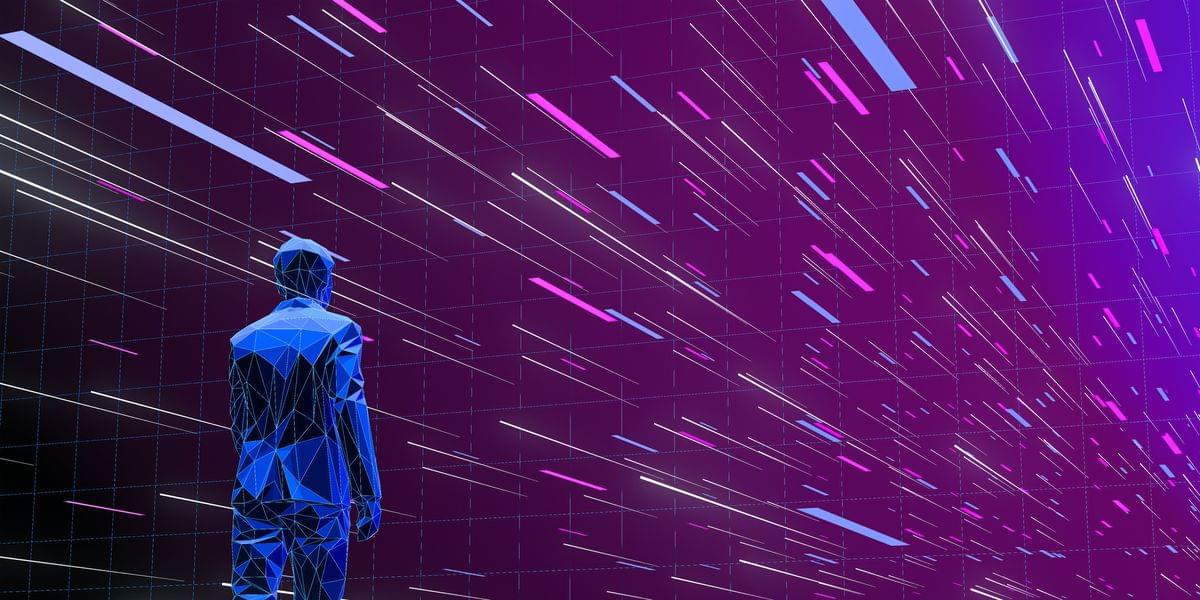Boom Supersonic’s XB-1 test vehicle is scheduled to lift off today (Jan. 28) at 11 a.m. EST (1600 GMT).
Get the latest international news and world events from around the world.

Mediterranean Diet Linked to Improved Memory via Gut Bacteria Changes
A new Tulane University study suggests the Mediterranean diet’s brain-boosting benefits may work by changing the balance of bacteria in the gut.
In a study published in Gut Microbes Reports, researchers at Tulane University School of Medicine found that subjects following a Mediterranean diet developed distinctly different gut bacteria patterns compared to those eating a typical Western diet. These bacterial changes correlated with better memory and cognitive performance.
“We’ve known that what we eat affects brain function, but this study explores how that could be happening,” said lead author Rebecca Solch-Ottaiano, Ph.D., neurology research instructor at Tulane’s Clinical Neuroscience Research Center. “Our findings suggest that dietary choices can influence cognitive performance by reshaping the gut microbiome.”

Sam Altman Predicts the SINGULARITY | Our Final Invention
A cryptic six-word tweet from OpenAI CEO Sam Altman— Near the singularity; unclear which side—has left the tech world buzzing with speculation. Is this a warning about the dangers of AI, a revelation of progress, or a subtle message about the inevitability of the singularity? As whispers of superintelligence grow louder, it seems we’re on the brink of a technological revolution once considered pure science fiction. OpenAI’s groundbreaking advancements, such as the rumored o3 model, suggest that the singularity may already be unfolding before our eyes. But what’s really happening behind the scenes? Are these advancements paving the way for a brighter future or setting the stage for unforeseen challenges? And why has Sam Altman, one of the leading voices in AI, sparked controversies with his cryptic remarks and bold predictions? In this video, we’ll uncover the mystery behind Sam’s tweet, explore OpenAI’s latest breakthroughs, and dive into the implications of living in a world teetering on the edge of the singularity. Are we prepared for what’s coming? Chapters: Intro 0:00 — 1:30 Sam’s Mysterious Tweet 1:31 — 2:35 OpenAI’s o3 Model Announcement 2:36 — 3:25 What’s Happening Behind Closed Doors? 3:26 — 6:08 Sam Creating Unnecessary Controversies 6:09 — 7:10 The Singularity: Are We Ready? 7:11 — 8:11.
China & Crypto
Please Support the Channel (It’s just me making China Update):
Patreon Link: https://www.patreon.com/chinaupdate.
One-off Tips Here: https://www.buymeacoffee.com/chinaupdate.
China Update is about China economic and political news and analysis #chinaupdate #trump #china.
X (Formerly Twitter): https://twitter.com/tonychinaupdate.
Channel email:
[email protected].
00:00 Introduction.
00:12 DeepSeek Rocks Global Tech Markets.
08:05 China & Crypto.
China Update provides viewers with the most up to date political, economic, and geostrategic analysis on China. Videos are based on hundreds of articles, think tank reports, government statements and other resources in English and Chinese. China Update is fully independent, all views and analysis are all my own and I make the videos.
Uplifting: Animals and Aliens Part II
Part II of a collaboration with Isaac Arthur on the subject of uplifting, the concept of increasing an animal or alien species’ intelligence. Further, we explore the concept of Downshifting, the idea of making deliberately making something less intelligent.
Watch Part 1: • Uplifting Animal & Aliens, Part 1 of 2
Isaac’s video on rare intelligence:
• fermi paradox great filters: rare int…
Music:
Cylinder Eight by Chris Zabriskie is licensed under a Creative Commons Attribution license (https://creativecommons.org/licenses/.…
The Anthropic Principle & Super Intelligence
The Anthropic Principle and Super-Intelligence, or SI, are vital concepts to understanding the Universe and our future place in it.
Join this channel to get access to perks:
/ @isaacarthursfia.
Visit our Website: http://www.isaacarthur.net.
Join Nebula: https://go.nebula.tv/isaacarthur.
Support us on Patreon: / isaacarthur.
Support us on Subscribestar: https://www.subscribestar.com/isaac-a… Group: / 1,583,992,725,237,264 Reddit:
/ isaacarthur Twitter:
/ isaac_a_arthur on Twitter and RT our future content. SFIA Discord Server:
/ discord Support the Channel at Patreon: https://www.patreon.com/user?ty=h&u=3…
Facebook Group: / 1583992725237264
Reddit: / isaacarthur.
Twitter: / isaac_a_arthur on Twitter and RT our future content.
SFIA Discord Server: / discord.
Finding Solutions to the Fermi Paradox with Harvard’s Dr. Avi Loeb
A new interview with Dr. Abraham “Avi” Loeb from Harvard and update on the subject of Oumuamua, the Fermi Paradox, interstellar objects. Life around red dwarf stars, solar flares, and the search for intelligent alien civilizations. This is part two of a two part interview with Dr. Loeb. Have Aliens Found Us? A Harvard Astronomer on the Mysterious Interstellar Object ‘Oumuamua : https://www.newyorker.com/news/the-ne… Strange Facts about the Interstellar Visitor Oumuamua: https://www.cfa.harvard.edu/~loeb/SL.pdf “COULD SOLAR RADIATION PRESSURE EXPLAIN ‘OUMUAMUA’S PECULIAR ACCELERATION?”, Bialy and Loeb, 2018 https://arxiv.org/pdf/1810.11490.pdf Is Oumuamua A Light Saul? Featuring Dr. Avi Loeb: • Is ‘Oumuamua a Light Sail? Featuring… Why The Universe May Be Full Of Alien Civilizations Featuring Dr. Avi Loeb:
• Why The Universe May Be Full Of Alien… Website: https://www.eventhorizonshow.com/ You can now support us on Patreon!
/ eventhorizonshow Follow us on Twitter!
/ jmgeventhorizon Follow us on Instagram!
/ jmgeventhorizon.
The Year 3000 & Beyond: 300 Future Technologies
⬇️ Services I Use & Recommend:
Descript: https://geni.us/OECB
(AI-powered video/audio editing—perfect for creating content)
HeyGen: https://bit.ly/4ahOfxQ
(AI video platform for creating lifelike avatars—ideal for multilingual, futuristic content)
OpusClip: https://bit.ly/4gS7ZKq.
(AI tool for repurposing videos into short-form clips)
1of10 Finder for YouTube: https://bit.ly/3NHnpVp.
(Great for finding outlier videos on YouTube)
Skool: https://bit.ly/4iZlp9l.
(Online community and course platform—useful for building & monetizing an audience)
Epidemic Sound: https://geni.us/Bz7EdE1
Early Terraforming: The First Steps in Planetary Transformation
Terraforming an entire planet is a colossal undertaking that will take lifetimes to complete. So assuming you’re that committed to seeing it through, how do you even start?
Watch my exclusive video Orbital Farms: https://nebula.tv/videos/isaacarthur–…
Get Nebula using my link for 40% off an annual subscription: https://go.nebula.tv/isaacarthur.
Get a Lifetime Membership to Nebula for only $300: https://go.nebula.tv/lifetime?ref=isa…
Use the link gift.nebula.tv/isaacarthur to give a year of Nebula to a friend for just $30.
Visit our Website: http://www.isaacarthur.net.
Join Nebula: https://go.nebula.tv/isaacarthur.
Support us on Patreon: / isaacarthur.
Support us on Subscribestar: https://www.subscribestar.com/isaac-a…
Facebook Group: / 1583992725237264
Reddit: / isaacarthur.
Twitter: / isaac_a_arthur on Twitter and RT our future content.
SFIA Discord Server: / discord.
Credits:
Early Terraforming.
Episode 471; November 3, 2024
Produced, Narrated & Written: Isaac Arthur.
Editor: Donagh Broderick.
Graphics:
Jeremy Jozwik.
Ken York YD Visual.
Mafic Studios.
Udo Schroeter.
Select imagery/video supplied by Getty Images.
Music Courtesy of Epidemic Sound http://epidemicsound.com/creator